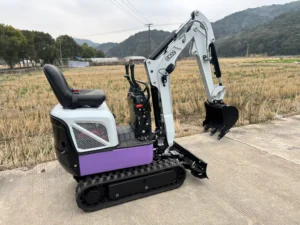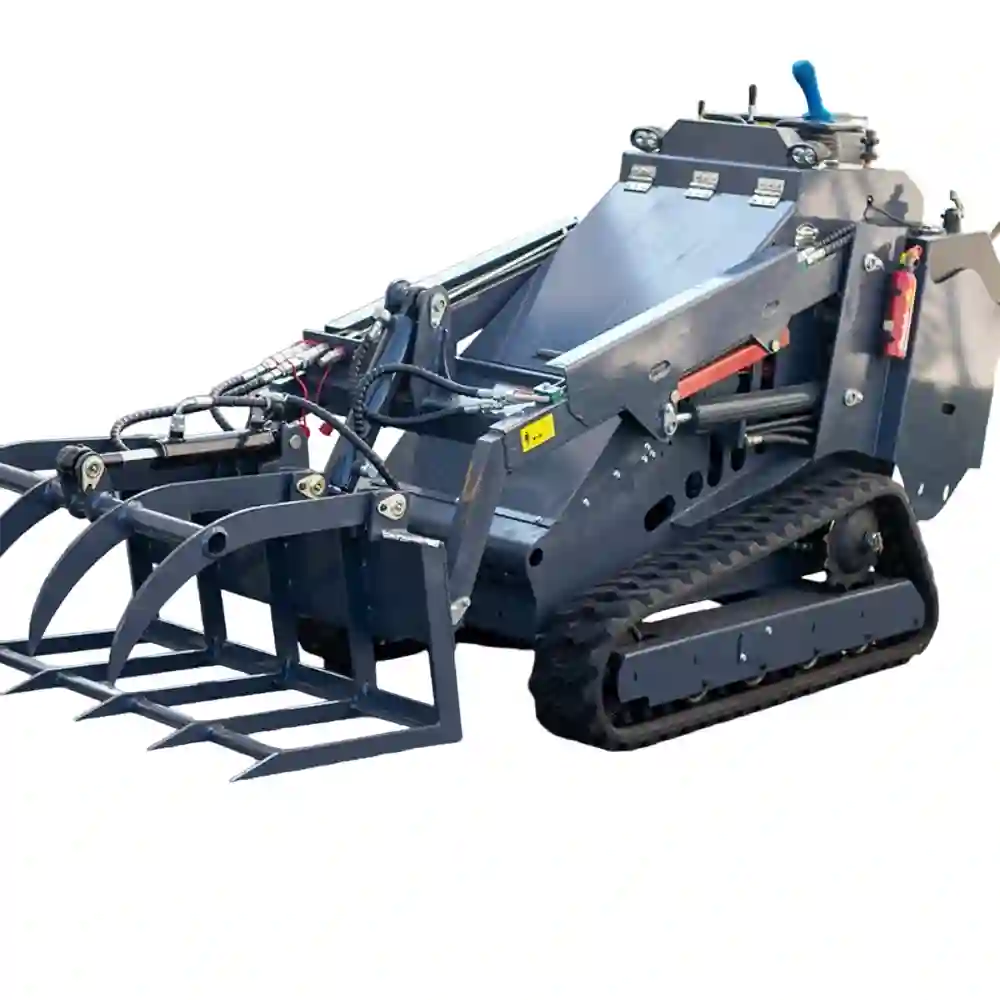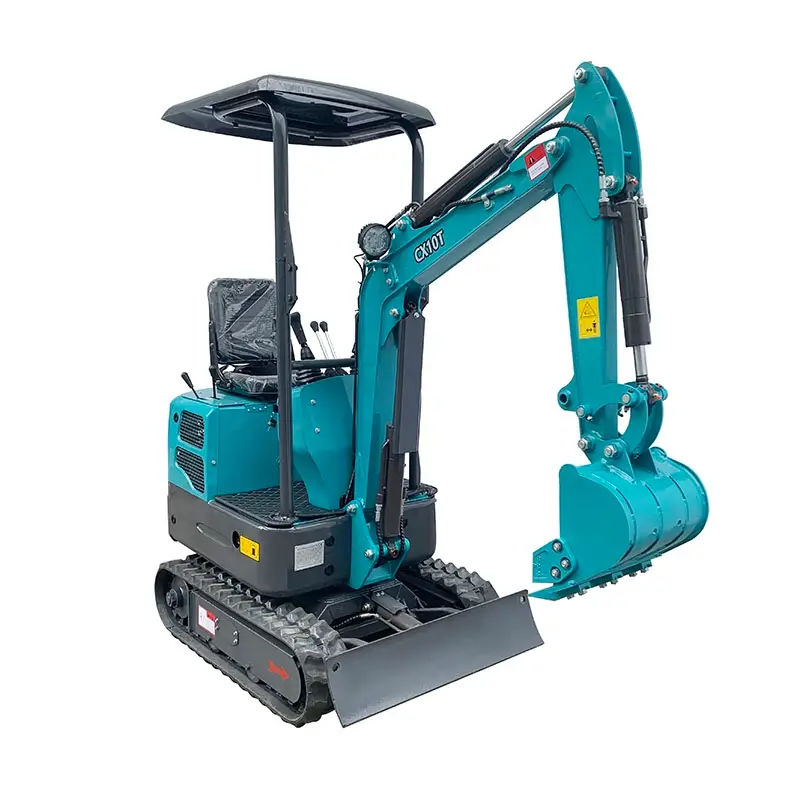Evaluate Terrain Adaptability
Excavators are used across construction, roadwork, landscaping, mining, and utility industries. Terrain conditions vary greatly, from compact urban job sites to rugged mountain areas and open fields. Each project requires machines that can adapt without compromising productivity or safety.
Mini excavators are especially effective on soft soils and tight urban environments due to their small size, reduced mini excavator weight, and lower ground pressure. Mid-size models are suitable for general construction where balance between mobility and strength is essential. Large excavators are preferred for quarrying, mining, and heavy infrastructure because of their high lifting power and deeper digging ability.
Ningbo ACE Machinery Co., Ltd leverages 29 years of experience to produce excavators designed for diverse terrains. The company integrates advanced hydraulics, robust engines, and optimized weight distribution into its 2 ton mini excavator and larger ranges. Strict QC/QA processes ensure stability even under demanding conditions.

Match the Job to the Excavator Type
Choosing the right excavator depends on project size, terrain, and lifting needs. Mini excavators excel in confined spaces, while larger excavators handle heavy digging and lifting. Matching excavator type ensures efficiency, safety, and cost savings.
Mini excavators, such as ACE’s 2 ton mini excavator, are highly suited for small-scale projects like residential construction, landscaping, and utility installation. Their compact design allows them to navigate narrow job sites and work efficiently where larger machines cannot operate. Mini excavator weight is optimized for transport, making them easier to move between sites. They are also fuel-efficient, lowering operational costs while maintaining productivity.
For mid-sized projects, contractors often select excavators in the 3–5 ton range. These machines offer greater lifting power and digging depth compared to smaller models, while still being versatile enough for varied applications. They are commonly used in road repair, foundation work, and medium-scale construction projects where strength and maneuverability are both critical. ACE’s models in this range provide a strong balance of stability, hydraulic efficiency, and operator comfort.
Large excavators are essential for heavy-duty tasks such as mining, large infrastructure, and major earthmoving. These models are engineered for maximum power and deep excavation capacity. Although they require larger operating spaces, their output makes them indispensable in large-scale industrial projects. By offering machines across multiple tonnage categories, ACE ensures clients can choose the right excavator type to match the unique demands of every job.
Prioritize Key Performance Parameters
Key parameters include lifting power, mini excavator weight, hydraulic efficiency, stability, and operator comfort. These directly impact job productivity and safety.
When evaluating excavators, contractors should focus on lifting capacity, which determines how effectively a machine can handle heavy materials.
Mini excavator weight also plays a crucial role. Lighter machines are easier to transport, cause less ground disturbance, and excel in tight or soft terrain. Heavier machines provide more stability, greater digging depth, and better lifting strength.
Understanding this balance allows contractors to maximize productivity while minimizing operating costs. ACE Machinery engineers its excavators to optimize this weight-to-performance ratio for different project requirements.
Hydraulic efficiency is another key parameter. Advanced hydraulic systems improve digging force, lifting accuracy, and fuel consumption. Stability, supported by counterweights and track design, ensures safety during lifting operations. Operator comfort, often overlooked, enhances productivity by reducing fatigue during long shifts.
Why choose ACE excavators?
Choosing ACE excavators means selecting proven reliability and competitive performance. With nearly three decades of industry presence, ACE delivers excavators engineered for durability and precision. The company’s range includes compact mini excavators such as the 2 ton mini excavator, versatile for residential and small urban projects, and larger machines for heavy-duty work. Each model is designed with user-focused engineering, ensuring efficiency in fuel consumption, hydraulic control, and operational safety.
ACE places strong emphasis on quality assurance. Every excavator undergoes rigorous QC and QA inspections, managed by a dedicated team of professionals. These inspections cover structural integrity, hydraulic performance, safety compliance, and international certification requirements. This process guarantees that customers receive machines capable of performing consistently under varied conditions. Furthermore, with delivery timelines between 7–30 days, ACE supports global projects with timely supply.
Another strength is customer support. The international sales team provides multilingual assistance, technical training, and product consultations. This ensures clients understand operating procedures, routine maintenance, and terrain-specific applications. For buyers seeking mini excavators, ACE offers guidance on mini excavator weight, lifting capacity, and terrain adaptability, allowing them to select the right model with confidence.
How much can a mini excavator lift?
The lifting ability of mini excavators varies depending on machine tonnage, design, and hydraulic system. A 2 ton mini excavator generally handles lifts of 200–400 kilograms, suitable for small construction materials, trenching tasks, or landscaping jobs. This makes it practical for projects requiring precision over raw power, such as pipe laying or residential construction. Compact size and lower mini excavator weight also allow operation in confined spaces where larger machines cannot maneuver.
In contrast, a 3–5 ton mini excavator increases lifting capacity significantly. These models manage 500–1,000 kilograms depending on arm reach and bucket size. They are widely used in small-to-medium infrastructure projects, where versatility and strength are both required. ACE Machinery engineers its mini excavators with optimized counterweights and reinforced hydraulics to ensure lifting operations remain stable. These design choices reduce tipping risks while maintaining power efficiency.
Customers worldwide value ACE excavators because of their consistent performance. From small landscaping businesses to municipal contractors, ACE mini excavators provide reliable lifting solutions. Lightweight models are ideal for transport and fuel savings, while heavier models balance strength with agility. By offering machines across multiple tonnage ranges, ACE ensures that clients can match project requirements with the right lifting capacity.
How to keep track of mini excavators
Efficient management of mini excavators improves productivity and extends equipment lifespan. Tracking involves monitoring machine usage, mini excavator weight-based performance, fuel efficiency, and maintenance schedules. Contractors often use telematics systems, which provide real-time data on locati0n, engine hours, hydraulic pressure, and fuel consumption. This data enables fleet managers to optimize operations, reduce idle time, and prevent unplanned breakdowns.
For smaller businesses, manual tracking methods such as logbooks or digital spreadsheets remain effective. Operators can record daily hours, maintenance checks, and lifting performance. Regular inspections also play an important role, ensuring that the 2 ton mini excavator or other models remain safe and reliable. Preventive maintenance, such as oil changes and hydraulic system checks, helps avoid costly repairs and downtime.
ACE Machinery supports customers with training and after-sales guidance. This includes recommendations on how to monitor mini excavators for wear, fuel economy, and stability. By using digital monitoring tools combined with professional training, companies can manage equipment more effectively. Proper tracking reduces operational costs, extends machine life, and maximizes the return on investment for every excavator in the fleet.





